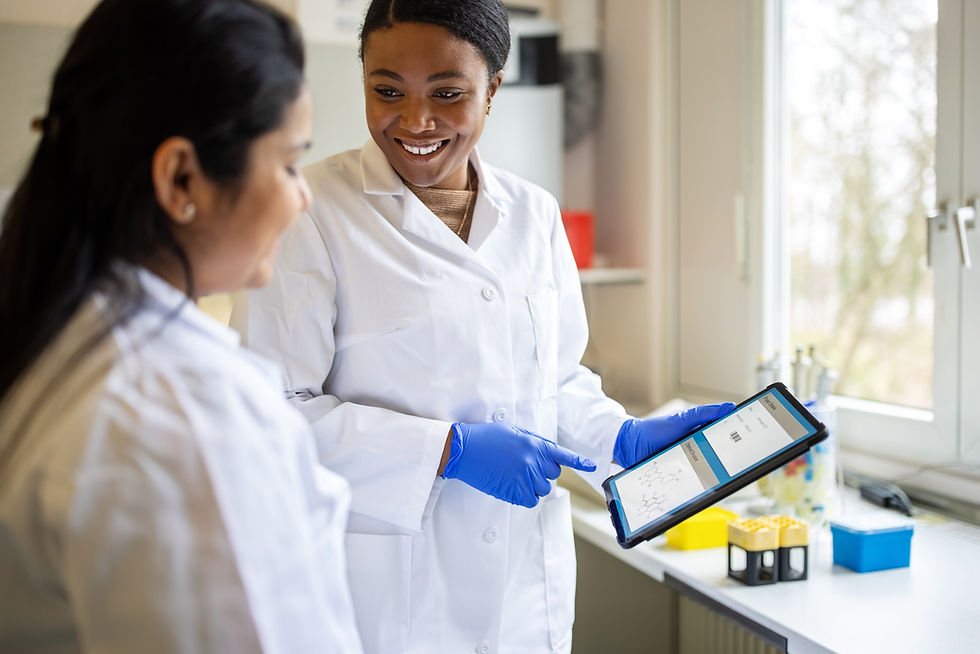New international research projects from DEBRA Austria and EB Resnet
- DEBRA International
- Dec 15, 2023
- 3 min read
Updated: Dec 21, 2023

Two projects were recommended for funding as a result of the All Priorities Call launched by EB Resnet 2022. After intensive negotiations, contracts for those two new research projects have been successfully issued, both deemed to be of ‘international’ standard, in that they are expected to make an internationally significant difference in increasing either understanding of EB, or driving forward potential therapies, diagnostic or symptom-relief treatments. The strictly formalized peer review process makes it possible to identify the best projects for EB patients worldwide. They are very hopeful that these projects may provide new therapeutic concepts that could potentially be further developed for clinical application, as both are already at the pre-clinical stage.
All applicants receive detailed feedback on their proposals, whether successful or not, to ensure a continuous improvement in the quality of EB research, and better targeting of patient needs. And this process has already borne fruit. In addition to the above two projects submitted to the scheduled call, they invited a revision of a promising proposal previously received. The applicant took into consideration all the reviewers' recommendations and resubmitted a reduced project focusing more appropriately on establishing proof-of-concept, and this was subsequently funded via the Ad-hoc funding scheme.
Details on newly funded research projects 2023
Garcia-Diez 1: In vivo correction of Recessive Dystrophic Epidermolysis Bullosa by gene editing mediated by adenoviral vectors.
PI: Prof Marta Garcia Diez
Institution: University Carlos III de Madrid
Funding Round: AP Call 2022 (recommended as international standard), funded by DEBRA Spain, DEBRA Austria, and DEBRA Sweden
Main targeted unmet medical need: Mutation correction and Woundhealing
This project targets one of the most severe complications of EB: fibrosis, the pathological skin thickening and scarring that occurs mainly in patients with recessive dystrophic EB (RDEB) and contributes to developing aggressive skin cancer. The proposed research approach is particularly exciting because it is already being tested for another indication in a phase II/III clinical trial. Initial data from the research group also indicate an effective reduction of fibrosis in RDEB mouse models. The project relies on a repurposing model of an already-known molecule and could move relatively quickly into clinical implementation if the results are positive.
The aim of this research project is to develop a clinically relevant gene therapy product for the topical in vivo treatment of wounds on the skin of RDEB patients. Vectors (i.e. the means of delivery) of the gene therapy are third-generation "helper-dependent adenoviral vectors" , which have a higher safety, loading capacity and longer transgene expression. Chronic wounds will be treated by topical application of a clinical grade hydrogel formulation containing the modified virus vectors. The project will evaluate the feasibility of gene editing-mediated phenotypic correction of wounds in a mouse model for RDEB (hypomorphic mouse) and in a humanised mouse model generated by transplantation of patient skin to immunodeficient mice.
Condorelli 1: Notch signalling by the gamma-secretase inhibitor PF-03084014 to counteract fibrosis progression in recessive dystrophic epidermolysis bullosa
PI: Dr Angelo Giuseppe Condorelli
Institution: Bambino Gesù Children's Hospital, Rome, Italy
Funding Round: AP Call 2022 (recommended as international standard)
Funding Body: funded by DEBRA Austria
Main targeted unmet medical need: Chronic inflammation and Fibrosis
This project comes from gene therapy and is based on CRISPR/Cas9 technology. The research team proposes the development of an in vivo (directly on the skin) gene therapy in the form of a skin gel for RDEB patients. Correction of a prevalent mutation of the collagen-7 gene could be achieved with a specific adenoviral vector. The aim is to develop a drug for treating chronic wounds, which could also be effective in the digestive tract of EB patients. It aims to explore the therapeutic potential of a commercially available compound that is already in clinical trials (phase 2 and 3) for another indication, but which may be relevant for the treatment of RDEB based on preliminary evidence of its antifibrotic profile (repurposing).
Project description on EB Resnet.
Revised proof-of-concept Ad-hoc funding scheme project
Connelly 1: Investigating the impact of EBS-causing keratin mutations on epigenetic gene regulation.
PI: Prof John Connelly
Institution: Queen Mary University of London, UK
Funding Round: Ad-hoc Funding Scheme 2022 EB Resnet
Funding Body: funded by DEBRA Austria
Epidermolysis Bullosa simplex (EBS) is a caused by mutations in keratins that are essential for skin strength and resiliency. Recent studies by the research team have discovered that keratin defects also cause dramatic changes in the structural properties of the nucleus of skin cells. As the nucleus is a central point for regulating gene expression, the group hypothesises that these structural changes in the nucleus also influence the organisation of DNA (also known as the epigenetic state) and expression of genes. The proposed project will therefore investigate how EBS mutations influence the cell's epigenetic state. The team will profile the global changes in key epigenetic markers in healthy and patient-derived keratinocytes and skin samples. The findings will provide new and fundamental insights into EBS pathology, specifically the epigenetic state, which is a powerful regulator of cell function but currently unknown in EBS.


Comments